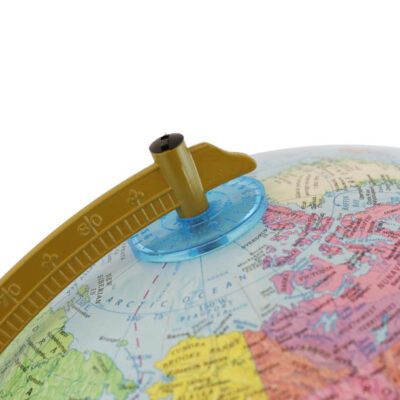In today’s interconnected world, where travel and global communication have become the norm, understanding and managing time zones is crucial. While digital devices provide convenient solutions, there’s something intriguing about the tactile experience of using a time dial on a world globe.
In this article, we will delve into the concept of a time dial, explore its significance, and provide step-by-step instructions on how to use it effectively.

What is a Time Dial?
A time dial, also known as a time zone dial or a world time dial, is a feature found on certain world globes, typically those designed for educational or decorative purposes. It serves as a visual representation of the world’s time zones and allows users to determine the time in various locations around the globe with relative ease.
Understanding Time Zones:
Before we proceed, let’s briefly review the concept of time zones. Earth is divided into 24 longitudinal segments, each representing a time zone, extending from the North Pole to the South Pole. These time zones help regulate timekeeping across different regions, accounting for the rotation of the Earth.
Using the Time Dial:
Step 1: Familiarize Yourself with the Time Dial
Examine the world globe and locate the time dial, usually positioned near the attachment at the North Pole. The time dial consists of a circular disc, divided into 24 segments, each corresponding to a specific time zone.
Step 2: Find Your Reference Point
Identify your current location or the location you wish to know the time for. Locate the reference point on the globe by either finding the name of the city or its approximate geographical location.
Step 3: Align the Reference Point
Rotate the time dial so that the reference point on the globe aligns with the segment on the time dial representing the desired time zone. Ensure that the alignment is accurate for precise results.
Step 4: Read the Time
Once the alignment is complete, observe the position of the time dial’s indicator or hour hand, which should now point to the corresponding time zone on the time dial. Read the time indicated on the dial.
Step 5: Consider Daylight Saving Time
If the location you are referencing observes Daylight Saving Time, make the necessary adjustments by moving the time dial’s indicator forward or backward one hour, depending on the time of year.
Step 6: Exploring Other Time Zones
To determine the time in different time zones, repeat steps 2 to 5 by aligning different reference points on the globe with the respective time zone segments on the time dial.
A time dial on a world globe offers a tangible and interactive method of understanding and managing time zones. By aligning reference points with the appropriate time zone segments, users can easily determine the time in various locations worldwide. While digital tools have become prevalent, embracing the charm of a time dial allows for a deeper connection with global timekeeping and fosters a greater appreciation for the vastness and diversity of our world. So, next time you encounter a world globe with a time dial, give it a spin and unlock the wonders of time zones in a truly captivating way.
